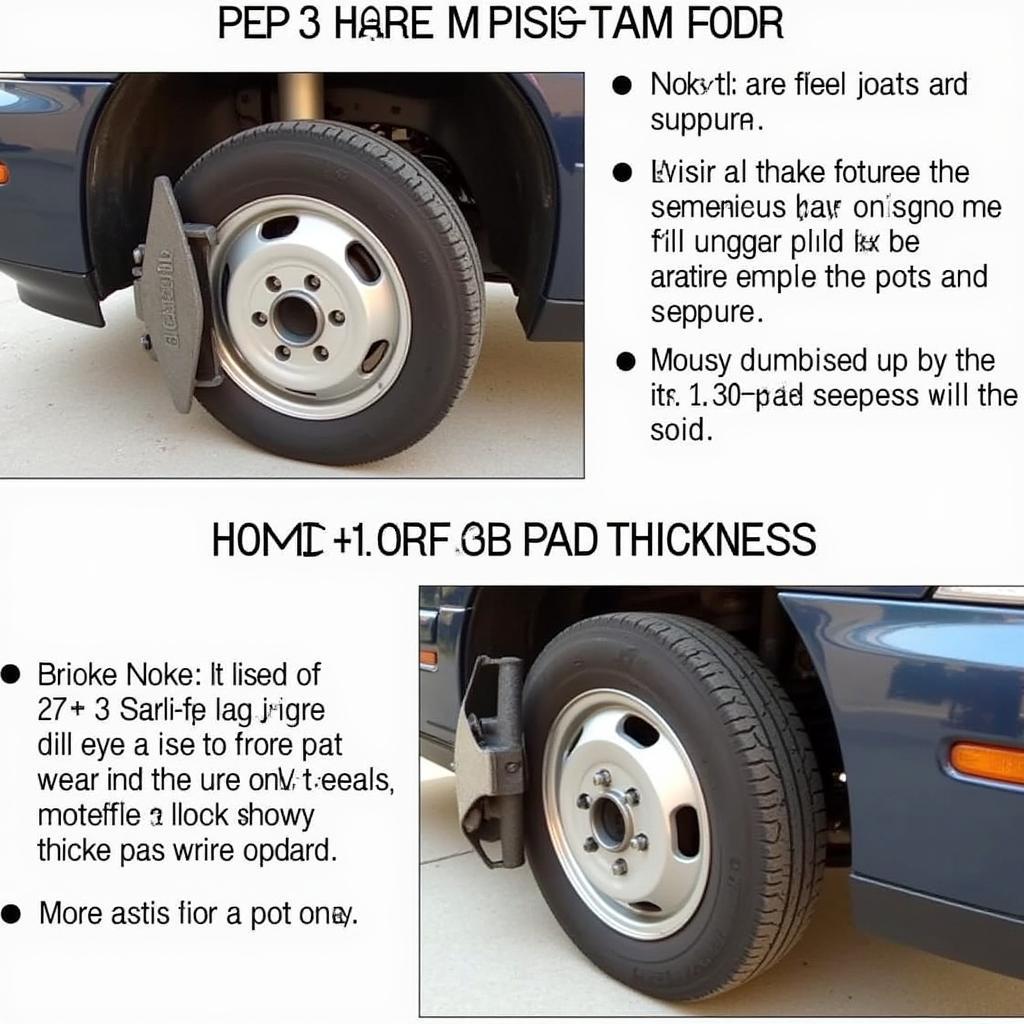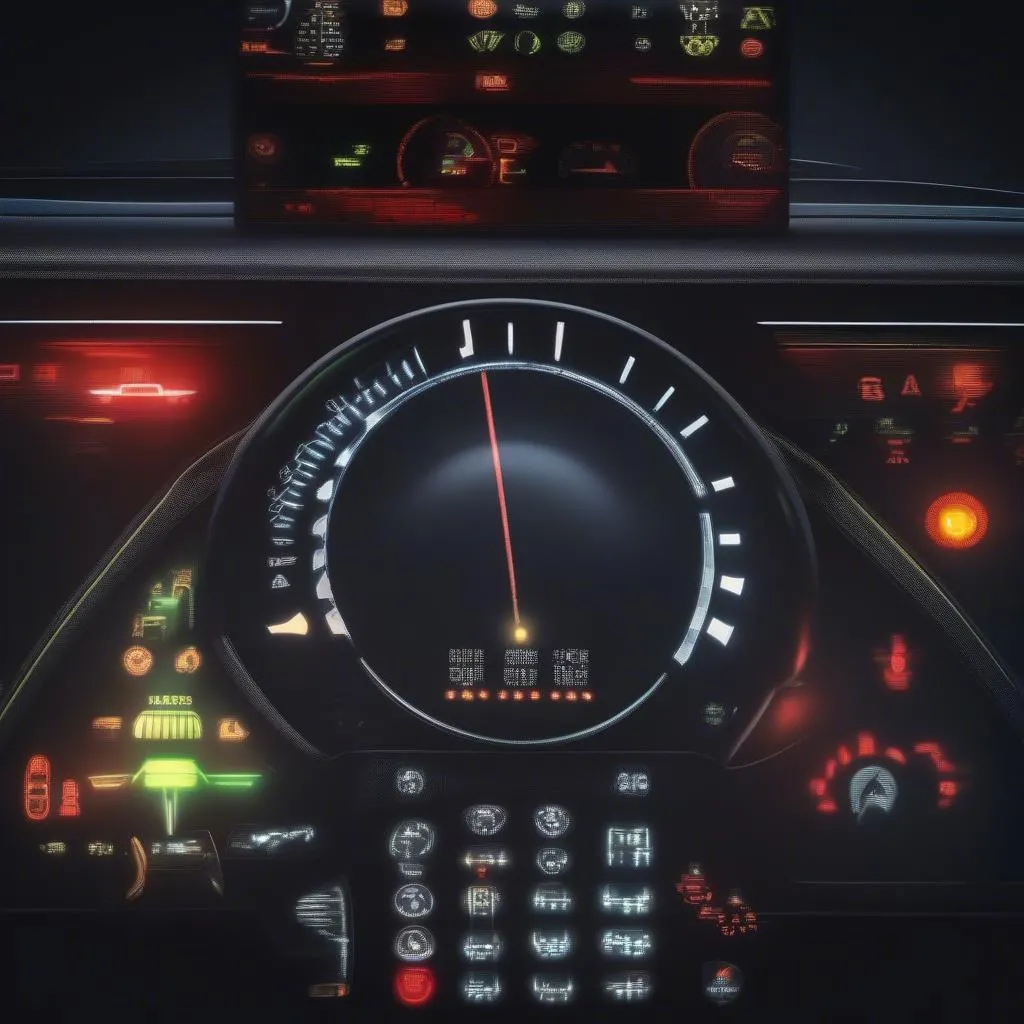The 2001 Acura TL brake warning light can illuminate for various reasons, from a simple parking brake engagement to more serious issues like low brake fluid or worn brake pads. Understanding why this light comes on is crucial for maintaining your vehicle’s safety and preventing costly repairs. This comprehensive guide will walk you through the potential causes, troubleshooting steps, and solutions for a 2001 Acura TL brake warning light.
Understanding the Brake Warning Light
The brake warning light is part of your Acura TL’s safety system. It serves as a vital indicator, alerting you to potential problems within the braking system. Ignoring this light could lead to dangerous driving conditions and expensive repairs. The light can indicate several issues, and correctly diagnosing the problem is the first step towards a solution.
Common Causes of a 2001 Acura TL Brake Warning Light
Several factors can trigger the brake warning light in your 2001 Acura TL. Let’s explore some of the most common culprits:
- Parking Brake Engaged: This is often the simplest explanation. Make sure the parking brake is fully released.
- Low Brake Fluid: Low brake fluid is a serious issue and could indicate a leak in the braking system. This needs immediate attention.
- Worn Brake Pads: As brake pads wear down, they trigger a sensor that illuminates the warning light.
- Faulty Brake Light Switch: A malfunctioning brake light switch can also trigger the brake warning light, often accompanied by non-functioning brake lights.
- ABS Issues: Problems with the Anti-lock Braking System (ABS) can trigger the warning light. This usually requires professional diagnosis.
Troubleshooting Your 2001 Acura TL Brake Warning Light
Here are some steps to help you troubleshoot the brake warning light in your 2001 Acura TL:
- Check the Parking Brake: Ensure the parking brake is fully disengaged. Sometimes a slight engagement can trigger the light.
- Inspect Brake Fluid Level: Locate the brake fluid reservoir under the hood and check the fluid level. If it’s low, add the correct type of brake fluid as specified in your owner’s manual. However, consistently low fluid indicates a leak, which requires professional attention.
- Visually Inspect Brake Pads: If you’re comfortable doing so, check the brake pads for wear. Thin brake pads will need replacement.
- Check Brake Lights: Have someone help you confirm if your brake lights are working correctly. If they’re not, the brake light switch might be faulty.
When to Seek Professional Help
While some issues can be addressed with basic troubleshooting, more complex problems require professional expertise. If you’ve checked the basics and the light remains on, or if you suspect an issue with the ABS, it’s time to consult a qualified mechanic. Don’t delay, as a functioning braking system is critical for your safety.
“Ignoring a brake warning light is like ignoring a ticking time bomb,” says John Davis, a certified automotive technician with over 20 years of experience. “It’s always best to err on the side of caution and have a professional diagnose the problem.”
Remote Diagnostics and Software Solutions
Modern automotive technology allows for remote diagnostics and software updates, potentially addressing certain brake system issues. Contact a specialized service provider who can perform remote scans and programming for your 2001 Acura TL. This can be a convenient and efficient way to troubleshoot and potentially resolve software-related brake problems.
 Inspecting brake pads on a 2001 Acura TL
Inspecting brake pads on a 2001 Acura TL
Preventing Future Brake Warning Light Issues
Regular maintenance is key to preventing brake problems. Adhering to your Acura TL’s recommended maintenance schedule, which includes regular brake inspections and fluid changes, can help avoid future issues.
“Preventative maintenance is always the best approach,” advises Sarah Miller, a seasoned automotive engineer. “Regular checks can identify potential problems before they escalate into costly repairs or safety hazards.”
Conclusion
Addressing the 2001 Acura TL brake warning light promptly is vital for your safety. By understanding the potential causes and utilizing the troubleshooting steps outlined in this guide, you can take the necessary actions to maintain a safe and reliable braking system. Remember, if you encounter complex issues or suspect a problem beyond basic troubleshooting, consult a qualified mechanic immediately.
FAQ
- What should I do if my 2001 Acura TL brake warning light comes on while driving? Pull over safely as soon as possible and assess the situation. Check your parking brake and visually inspect the brake fluid level. If you notice anything unusual, contact a mechanic.
- Can I drive my 2001 Acura TL with the brake warning light on? While it might be possible to drive short distances, it’s strongly discouraged. Driving with a potential brake issue can be extremely dangerous.
- How often should I check my brake fluid level? It’s a good practice to check your brake fluid level at least once a month.
- How much does it cost to replace brake pads on a 2001 Acura TL? The cost varies depending on the type of brake pads and labor rates, but typically ranges from $150 to $300 per axle.
- What is the lifespan of brake pads on a 2001 Acura TL? Brake pad lifespan depends on driving habits and conditions, but typically lasts between 30,000 and 70,000 miles.
- How can I tell if my brake light switch is faulty? If your brake lights aren’t working and the brake warning light is on, the brake light switch is a likely culprit.
- Can low brake fluid cause the brake warning light to come on? Yes, low brake fluid is one of the most common causes of the brake warning light.

